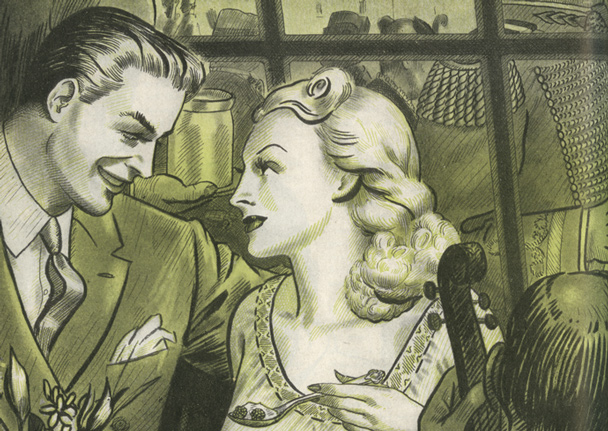If even the slightest mention of yogurt sends a brief but icy chill up my spine, it's only because of my introduction to that teasingly tart, seductively creamy dairy triumph. It began more than 65 years ago, when yogurt was celebrated mainly as health food, usually by messianic nutritionists, who made it sound about as appealing as medicine. Even though I had grown up loving similarly piquant buttermilk and sour cream, yogurt seemed at the time vaguely cultish, a symbolic food for true believers and followers of the then-popular health guru Adelle Davis. She praised yogurt's benefits in her 1947 book, Let's Cook It Right, touting it as a "Vitamin-B factory" and assuring readers that those who feel a pickup in health after developing a taste for it almost invariably "force it on their friends." Force, for me, was the discouraging word.
That is, until one searingly hot and humid afternoon in late June, also in 1947. I was a student at New York University and lived in a Greenwich Village one-room basement apartment well below breeze level and, typical of that time, without air-conditioning and with just a bathtub—no shower—to cool off in. I proceeded to fill that tub with cold water and decided that while chilling out I would read the June issue of Gourmet. I had discovered the magazine some five years before when a maiden aunt who lived with us brought home an early copy that had attracted her on a subway newsstand. I was captivated by the beautiful illustrations and, most of all, by the literary and philosophical takes on food. And so I already had a subscription by that summer scorcher, and I slowly slid into that frigid bath, shivering while trying not to wet the magazine.
The first story that grabbed me was "Yogurt and the Bulgarian Colonel," partly because of the exotic title and the accompanying romantic drawing of young lovers in a pretty café [above]. The writer, Martin Graham, told three stories. One was his own, as a youth visiting Bulgaria, where he developed a crush on a local girl, Clarissa, who touted the wonders of yogurt and credited it for her beautiful skin, among other attributes, and whose father, a colonel, put an abrupt end to the budding romance. The second story was a tribute to the gustatory delights of yogurt in various forms and combinations and included how to make it at home with a starter tablet of live cultures.
The third thread woven through the article was a brief history that began with Ilia Metchnikoff, the Russian microbiologist who won a Nobel Prize in medicine in 1908 for his work on yogurt. While traveling in Bulgaria, Metchnikoff became intrigued by the long life spans of the peasants (87 on average, with many living past 100)—despite primitive hygiene and limited medical care. Metchnikoff noted, however, that the peasants' dietary mainstay was a strange sort of sour milk. Upon examining that "milk," he found it contained a large amount of lactic acid microbes that warded off the effects of harmful, life-shortening intestinal bacteria. Back in his laboratory in Russia, Metchnikoff isolated the essential microbe that did the trick and, in honor of the country that inspired him, dubbed it Bacillus bulgaricus.
Sour milk of some sort was considered beneficial even in biblical times, the Gourmet article pointed out, citing the Fifth Book of Moses, which includes it among the foods Jehovah permitted his people. But as interesting as this history was, it would never have inspired me to leave the bathtub.
Instead, the credit is due to the author's descriptions of yogurt itself. Even as I chilled to the bone, my palate and entire being yearned for the cool, custard-like ivory cream that, he said, turns satiny when briskly stirred. And I was equally beguiled by his suggested enhancements of preserves based on apricots, oranges, plums, or strawberries; or honey; or fresh berries. I could hardly wait to try it. Thus inspired, I left my soak, donned clothes, and headed out to the upscale grocery store near my apartment.
Although stocked primarily by health food stores in those days, plain yogurt was also sold in some fancy food shops, made by Dannon and packed in half-pint glass jars with tight-fitting, stiff paper caps. As it happens, 1947 seems to have been a watershed year for yogurt, given the Davis book and the introduction of yogurt flavored with a bottom layer of strawberry preserves. That first flavored yogurt, devised by one of the Dannon executives, Joe Metzger, is said to have been the turning point in yogurt's popularity and the impetus for the entire industry that was to follow.



 Pinterest
Pinterest


